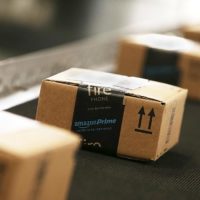Eric Schmidt Has a Coach: 3 Reasons Why You Should Have one Too

Did you know that you could increase views for your content by 94% if you include interesting visual elements?
Also, did you know that you can increase engagement with your content by 37% if the content is optimized using graphics and visuals?
Visual content such as videos, infographics and compelling images are the future of content marketing. Brand and content marketers are quickly realizing that online consumers are less interested in lengthy white papers and are more attracted to interesting images and videos.
Blogs, social media posts, articles and ebooks all have their place in the inbound marketing but adding compelling visual content will increase target audience engagement and eventually boost your bottom line.
Here’s how to get started with visuals to improve your content marketing results:
Stock images just won’t cut it if you really want to leverage the power of visuals. You must create your own content but this does not have to cost you too much time and money.
A good place to start is using template creation tools for quick DIY visuals. Templates make it easy for non-designers to overlay texts and images that are easily shareable.
Tools such as ReciteThis and Canva allow you to create compelling images with your brand assets including your logo, tag line and brand colors.
 Videos are incredibly popular and can be very effective at improving engagement with your target audience. The good news is that you do not have to use expensive video equipment to be able to shoot and distribute compelling content. For example, with the Instagram app, you can shoot quick 15 second videos on any fun or interesting aspect of your business and share this with fellow users.
Videos are incredibly popular and can be very effective at improving engagement with your target audience. The good news is that you do not have to use expensive video equipment to be able to shoot and distribute compelling content. For example, with the Instagram app, you can shoot quick 15 second videos on any fun or interesting aspect of your business and share this with fellow users.
If you want to take your content marketing a notch higher, set up a YouTube channel and commit to creating a wide-ranging database of helpful videos. Lowe’s, for example, is one of those brands that are successfully using video content to educate and engage their follower through DIY videos.
Another great and low cost method of incorporating visuals in your content strategy is using existing content to create educational visual content. For example, if you have a popular blog post on how to design an ebook cover, using a video tutorial or still images would generate even more engagement for the content and for your brand too.
Content curation can be really helpful in complementing your own visual content. It’s not just a time saver; it’s also a way to offer your audience some variety and to build relationships with other content creators who may in turn share your own content.
For organizational purposes, it’s best to establish a list of brands or sites that consistently serve up compelling content that your audience will be interested in. Scheduling tools will help you sort out popular images and post them consistently.
Rule of thumb: Visual content marketing will offer ROI or significant results in terms of engagement and conversion only to the extent that you share the content on a consistent basis.
Another source of curated visual content is your fans and followers.
User generated content adds variety and a sense of inclusion into your content strategy.
By encouraging your audience to share their own images under a certain theme, you are essentially allowing them to tell their own stories. This is an incredibly powerful way of connecting with your audience and humanizing your brand through content marketing.
Encouraging your fans to share their own images really starts with having conversations with them and finding out what interests them the most. Building this initial rapport makes it easier and more natural for them to share images and tell their stories.
Online consumers are looking for a real connection with brands. Whether you are in a B2B or B2C market, visual content is a powerful way of capturing your audiences’ attention. After all, in a noticeably noisy online landscape, being heard (and being seen) is very challenging to any marketer. Creating and sharing compelling visual content is just one more step toward bring in your leads further down the conversion funnel.






When you visit any web site, it may store or retrieve information on your browser, mostly in the form of cookies. Control your personal Cookie Services here.